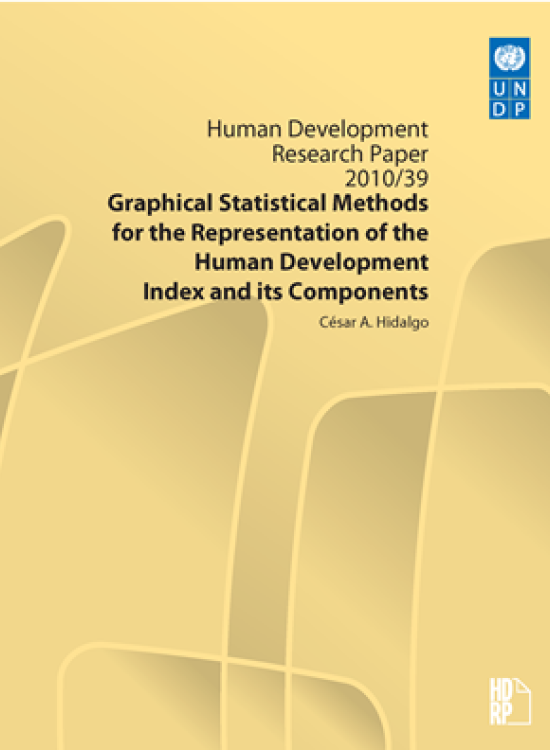Graphical Statistical Methods for the Representation of the Human Development Index and its Components

Download Report by Language
Document
hdrp201039.pdf
(6.5 MB)
Citation
Hidalgo, César A.. 2010. Graphical Statistical Methods for the Representation of the Human Development Index and its Components. New York.
Graphical Statistical Methods for the Representation of the Human Development Index and its Components
Posted on: January 01, 2010
In this paper we introduce five graphical statistical methods to compare countries level of development relative to other countries and across time. For this, we use seven panels of data on the Human Development Index and its components, containing information on more than 100 countries for more than 35 years. We create visual comparisons of the level of development of countries relative to each other, and across time, through five different visualization techniques: (i) Rankings (ii) Values (iii) Distributions (iv) visual metaphors (The Development Tree), and (v) networks, by introducing the concepts of Partial Ordering Networks (PON) and Development Reference Groups (DRG). The graphical exploration of both, values and distributions, show a saturation of both the education and life dimensions of the HDI, suggesting a need to extend the definitions of this components to include either more subcomponents, or completely new measures that could help differentiate between countries facing different development challenges. The Development Tree and the Partial Ordering Network, on the other hand, are used to create graphical narratives of countries and regions. The simplicity of the Development Tree makes it an ideal graphical metaphor for branding the HDI in a multilingual setting, whereas Partial Ordering Networks provide a more organic way to group countries according to their levels of development and connect countries to those with similar development challenges. We conclude by arguing that graphical statistical methods could be used to help communicate complex data and concepts through universal cognitive channels that are heretofore underused in the development literature.